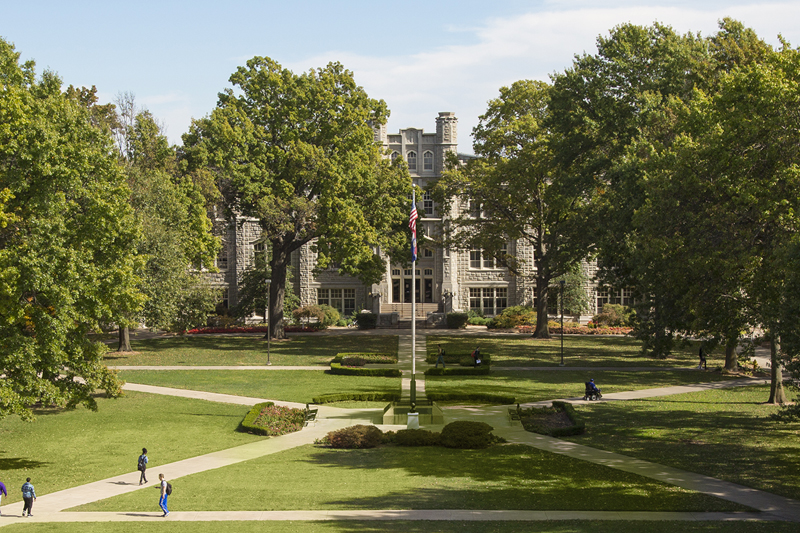By Jeff Murphy,
February 4, 2019

WARRENSBURG, MO – A commitment to helping students finish their college education
is contributing to the University of Central Missouri’s status as the state leader
in degree completion among public universities.
Statistics recently released by the Missouri Department of Higher Education (MDHE) show that between fiscal years 2015-2017, UCM’s degree completion rate per
full-time equivalent (FTE) was 50.5 percent. This figure is the highest among all
of Missouri’s public universities. It also is 10 percent higher than the university
with the next highest percentage of FTE completions, and double the state’s 25 percent
benchmark. What’s more, UCM’s FTE completion rate signifies a 7.6 percent increase
from FY2014-2016 data, the largest increase among all state public four-year institutions.
Data comparing various Missouri universities was released in January as UCM was notified
that it had achieved all performance standards established by the state. These are
metrics that impact the amount of state funding UCM will receive for Fiscal Year 2020.
In recent years, the MDHE worked with colleges and universities to establish a set
of performance measures that were vetted through the Missouri Coordinating Board for
Higher Education (CBHE) and are closely tied to funding higher education institutions.
These standards have sought to answer questions related to whether or not students
are completing certificates and degrees; mastering what they study; getting jobs or
continuing their education once they graduate; if the college or university is providing
an affordable education; and if the institution is being a good steward of state funding.
This process was first used by the Missouri Governor and the legislature for FY2015
and utilized six metrics to help determine an institution’s core funding. At least
90 percent of any increase to the core has previously been based on these performance
measures.
“CBHE had a set of performance metrics that have been in existence for a while,” said
Mike Godard, interim provost – chief learning officer at UCM. “The state decided
to change them last year. Then with the governor’s new initiatives in terms of the
focus on workforce development, they decided to go with three standards.”
He noted that UCM met the three priority measures that were set by the CBHE related
to completions per FTE, student pass rates on assessment or professional licensure
exams, and graduate outcomes. While the emphasis was on these metrics, UCM reported
on all six performance measures and achieved all of them.
“We’re pleased to see the good work that’s being done with completion rates at the
University of Central Missouri. Positive movement like this will help Missouri meet
its Big Goal of having 60 percent of working-age adults with a degree or certificate
by 2025,” said Zora Mulligan, Missouri commissioner of higher education.
UCM’s progress as a leader in the FTE completion area stems from an aggressive completion
agenda that was established by the university in 2013. At that time, UCM launched
its Learning to a Greater Degree Contract for student completion, which focuses on
getting students to earn at least 30 semester hours per year in order to graduate
on time.
This completion model also has helped drive the development of other student-focused
initiatives that steward the institution’s state funding toward efforts to enhance
student success and completion. These include the development of The Missouri Innovation
Campus (MIC), which enables students to begin their college education while still
in high school and gain valuable internship experience with major corporations while
also reducing their college debt. The completion agenda also includes the introduction
of a holistic advising model; opening of the Success Advising Center; and securing
a $2.3 million federal Strengthening Institutions Grant to fund student support and
first-year experience initiatives.
The university’s strong focus on helping students cross the degree finish line includes
measures aimed particularly at 64 percent of the UCM students who are first-generation,
Pell-eligible, or from a historically underrepresented minority group. It also means
maintaining affordable tuition and success measures that contribute to a more affordable
higher education. This continued focus on affordability has enabled the university
to witness a $15.9 million reduction in student loans over the past five years, in
addition to an increase in increase foundation scholarships of 30.3 percent since
2012.